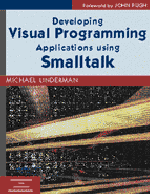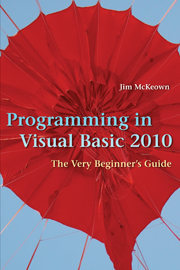Developing Visual Programming Applications Using Smalltalk
Developing Visual Programming Applications Using Smalltalk uses object-oriented visual programming environments to illustrate the concepts of object-oriented software construction. It introduces blueprints as a method to record visual programming applications and includes sample applications using VisualAge, VisualSmalltalk, and VisualWorks. This is the first book to use object-oriented visual programming tools to teach principles of object-oriented programming. It introduces a new approach that allows an easy transition from pseudocode to Smalltalk statements. The author also uses CRC Cards, Responsibility Driven Design, and Use-Cases methodologies to construct one of the larger applications.
- Helps readers create Smalltalk applications with three popular Smalltalk environments: VisualAge, VisualSmalltalk (PARTS), and VisualWorks
- Saves the time and money spent on courses and mentoring for learning Smalltalk
- Resolves on-the-job problems through case examples and includes relevant screen shots, tables, photographs, and drawings
Product details
December 1997Paperback
9780135692295
354 pages
229 × 178 × 23 mm
0.58kg
Unavailable - out of print
Table of Contents
- 1. The evolution of ideas
- 2. The Object-Oriented
- 3. Using complete parts to assemble Object-Oriented systems
- 4. VisualAge
- 5. Behind the looking glass
- 6. Programming with Smalltalk
- 7. Where do you go from here?
- Appendix A. Methods of nonvisual classes for MLAuction
- Appendix B. Nonvisual classes for MLAuction
- Appendix C. Additional information for section 6.4.






